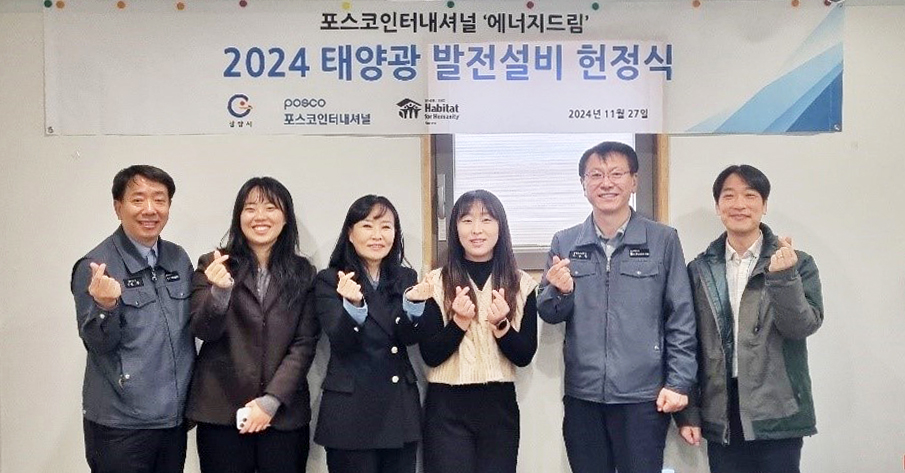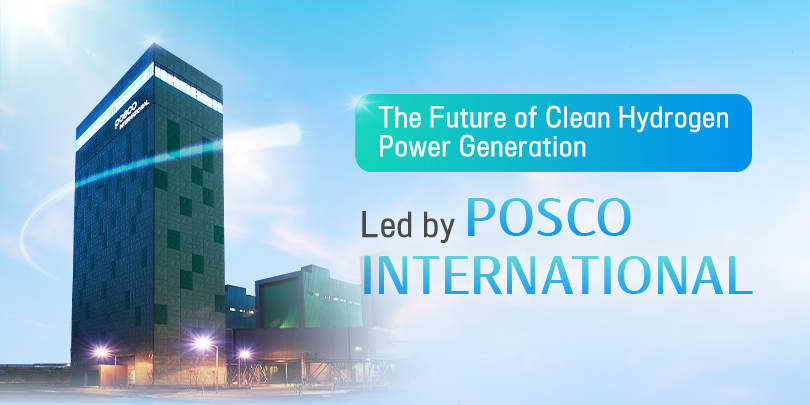
The fact that the Earth is getting hotter is now a well-known reality. The effects of climate change, such as extreme heat waves, frequent natural disasters, and rising sea levels, are affecting every aspect of our lives. In particular, the electricity we use daily is one of the main contributors to carbon emissions. This is because generating electricity by burning fossil fuels produces significant amounts of carbon dioxide. To reduce carbon emissions from electricity generation, various technologies, including the expansion of renewable energy, clean hydrogen power generation, and smart grids, are actively being developed. Among these, let’s take a closer look at clean hydrogen and clean hydrogen power generation.
1. Is Hydrogen Dangerous?
Busting Myths about Clean Future Energy and Finding Answers Planet Wide
Are you one of those people who believe, “Hydrogen is dangerous. It still has a long way to go.” Hydrogen, which remains unfamiliar to the general public, is often surrounded by misunderstandings and controversy.
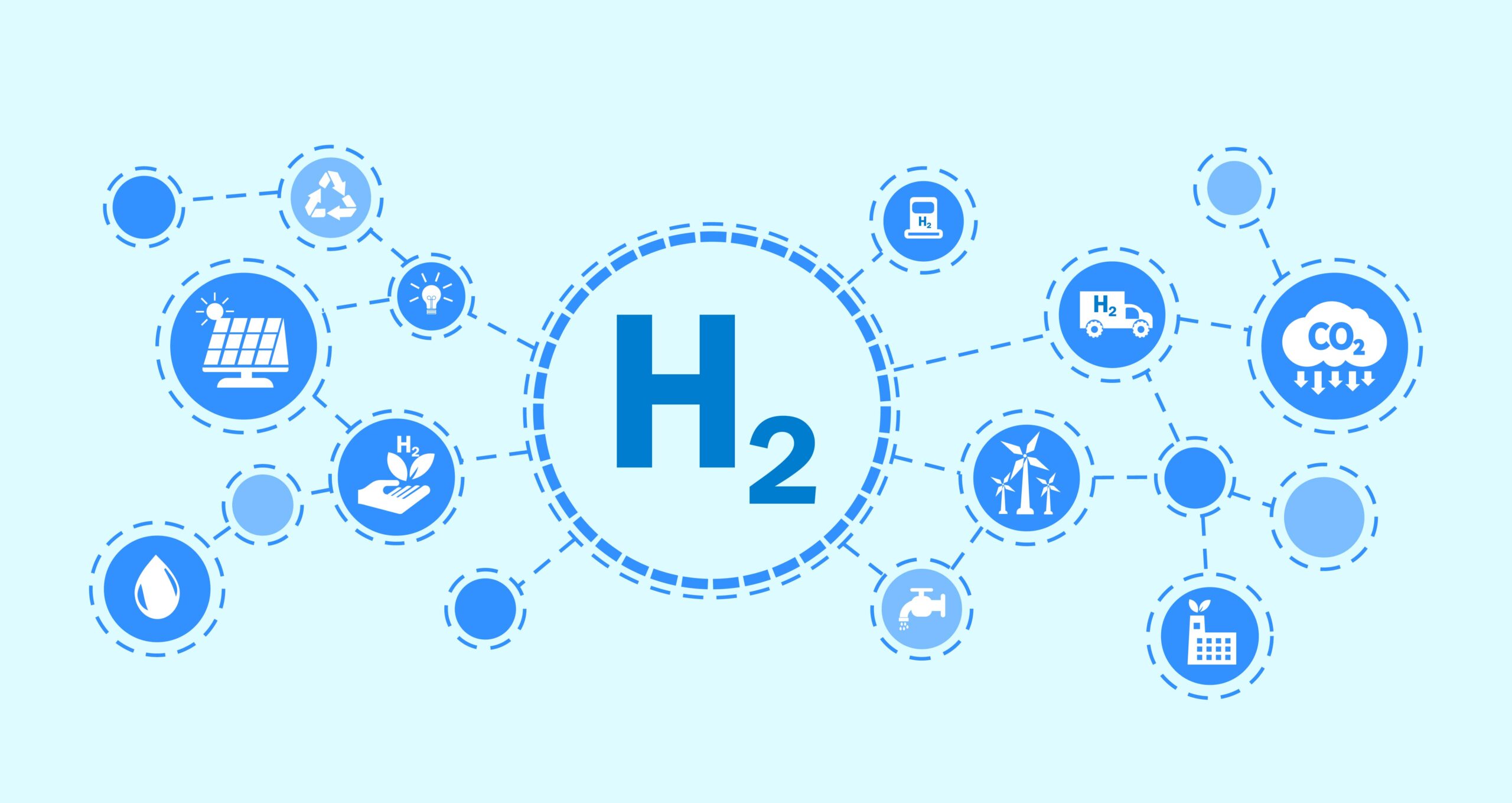
Is hydrogen a dangerous substance?
Although hydrogen is highly flammable, it is 14 times lighter than air, allowing it to disperse quickly into the atmosphere in the event of a leak, which reduces the likelihood of accumulation and minimizes the risk of fire or explosion. Many industries already use hydrogen safely, adhering to proper safety standards and equipment. With its high energy density, hydrogen is utilized across various sectors, including refining, chemicals, steel, transportation, and aerospace, and hydrogen cars and charging stations, commonly available in daily life, are manufactured after passing strict safety standards and operated under safety systems. Additionally, efforts to ensure industry safety are ongoing at the national level, including the development of the “Hydrogen Safety Management Roadmap 2.0” by the Korea Gas Safety Corporation in 2023.
Is the production cost of clean hydrogen1 (green hydrogen) too high?
It is undeniable that the current production cost of clean hydrogen is quite high. However, it is expected to gradually decrease due to technological advancements and market expansion. The International Energy Agency (IEA) predicts that the production cost of green hydrogen will fall to between 1.3 and 3.5 dollars per kilogram by 2030, and further to between 1 and 2.5 dollars per kilogram by 2050. The cost is expected to decrease constantly due to several factors, including decreasing costs of renewable energy generation, economies of scale in water electrolysis technology (a process that separates hydrogen and oxygen using electricity), and government support from various countries.
Is hydrogen a technology of the distant future?
The South Korean government is introducing various policies to achieve its 2050 carbon neutrality goal. One of them is the introduction of the Clean Hydrogen Energy Portfolio Standards (CHPS). Through CHPS, the government can require electricity providers specified by the presidential decree to either purchase or supply a mandated amount of hydrogen-generated electricity, which will be implemented through the clean hydrogen power bidding market. CHPS is a program designed to separate hydrogen power generation from the existing Renewable Portfolio Standards (RPS)2, establishing a support framework tailored to the specific characteristics of renewable energy and hydrogen power, while also promoting the use of clean hydrogen in power generation.
Clean hydrogen power generation involves blending clean hydrogen or clean hydrogen compounds (e.g., ammonia) into existing fossil fuel-based power generation systems to reduce carbon emissions. In 2024, the Korean government launched CHPS bids, and successful bidders plan to implement low-carbon power generation using hydrogen and ammonia within three to four years. This means that hydrogen is no longer just an energy source for vehicles but a critical resource playing a critical role for achieving carbon neutrality across all industries.
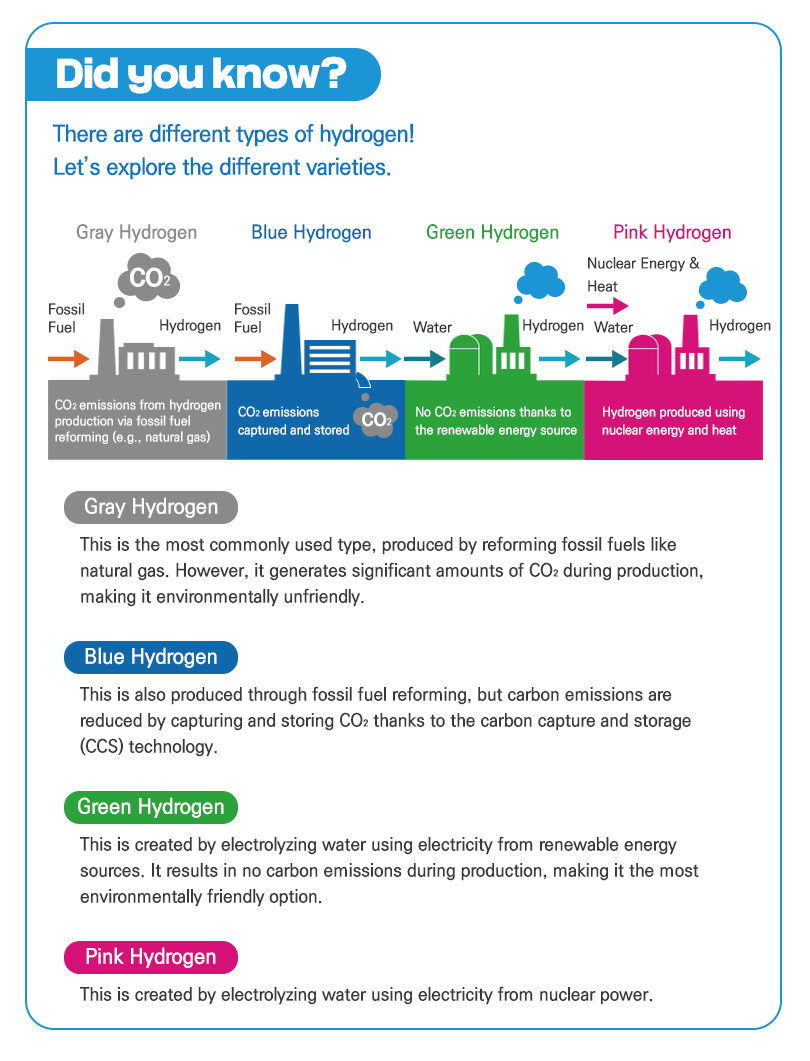
2. Setting the Standard for Clean Hydrogen
by Introducing the Clean Hydrogen Certification System
This year, the Korean government introduced the Clean Hydrogen Certification System to promote transparency in the hydrogen market, foster the growth of the hydrogen industry, and support the achievement of carbon neutrality goals. Under this system, hydrogen is classified as “clean” if the production of 1 kg of hydrogen results in less than 4 kg of carbon dioxide (CO2) emissions, and clean hydrogen is further categorized into four distinct grades based on the level of carbon emissions. With a clear standard now established to define clean hydrogen, the transparency of clean hydrogen transactions will improve, and market uncertainties will be resolved.
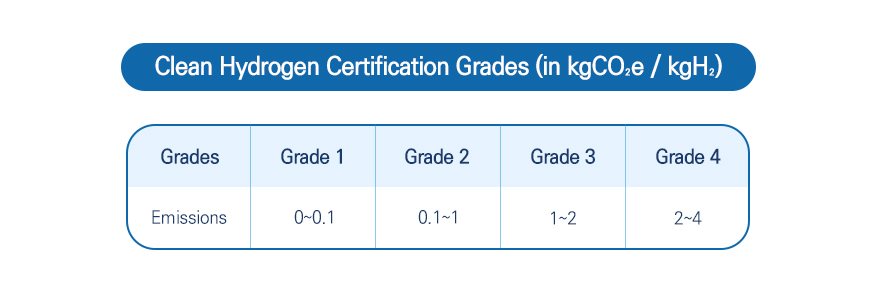
3. Demonstrating Commitment
Through the Clean Hydrogen Power Bidding Market
On May 24, 2024, Korea proudly announced the establishment of the world’s first clean hydrogen power bidding market built on the foundation of the aforementioned CHPS. This initiative reflects Korea’s strong commitment to achieving carbon neutrality and sets a significant benchmark for leading the global clean energy market.
The clean hydrogen power bidding market is a platform for purchasing and supplying electricity generated using clean hydrogen as a fuel. Electricity buyers will purchase clean hydrogen-powered electricity to supply to consumers. For 2024, the annual transaction volume is set at 6,500 GWh, with the contract term of 15 years. Eligible facilities for the bidding process include coal-ammonia co-firing power plants, LNG-hydrogen co-firing power plants, and hydrogen-dedicated power plants, all of which require a minimum co-firing ratio of 20% based on heat value.
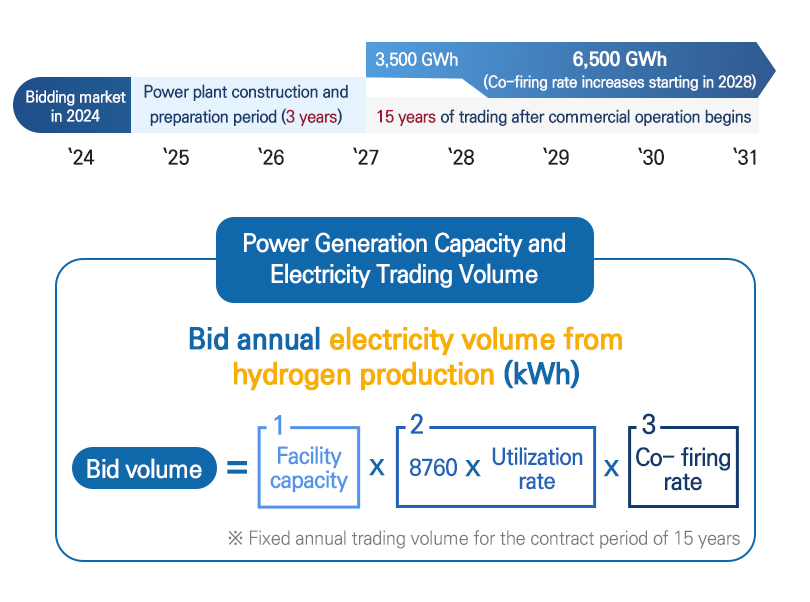
Winners of the bids are selected through a comprehensive evaluation of both price indicators (e.g., clean hydrogen generation costs) and non-price indicators (e.g., the grade of clean hydrogen, fuel supply stability, and contributions to industry and the economy). The operation of the clean hydrogen power bidding market is expected to yield dual benefits by helping to reduce greenhouse gas emissions and expand zero-carbon power sources environmentally, while promoting competition in the clean hydrogen market and establishing a cost-effective procurement system economically.
4. POSCO INTERNATIONAL’s Plan for Participating
in the Clean Hydrogen Power Bidding Market
POSCO INTERNATIONAL currently operates Incheon LNG Combined Cycle Power Plant, which has a capacity of 3,412 MW. This plant supplies about 10% of the power used in the capital region and about 2.3% of the total national power capacity. With seven power generators in operation, the plant plays a critical role in ensuring a stable supply of electricity to the capital region.
POSCO INTERNATIONAL has established a roadmap to reduce carbon emissions by 37% by 2030 compared to 2021 levels and aims to achieve carbon neutrality by 2050. As part of this vision, the power plant in Incheon plans to progressively transition to hydrogen co-firing by 2035 to become a leading operator of gigawatt-scale commercial hydrogen co-firing power plants. CO2 emissions will be reduced by integrating and replacing the aging Units No. 3 and 4, improving their efficiency in power generation, and participating in the government’s clean hydrogen power generation market by utilizing clean hydrogen co-firing (with a co-firing rate of about 20% based on heat value).
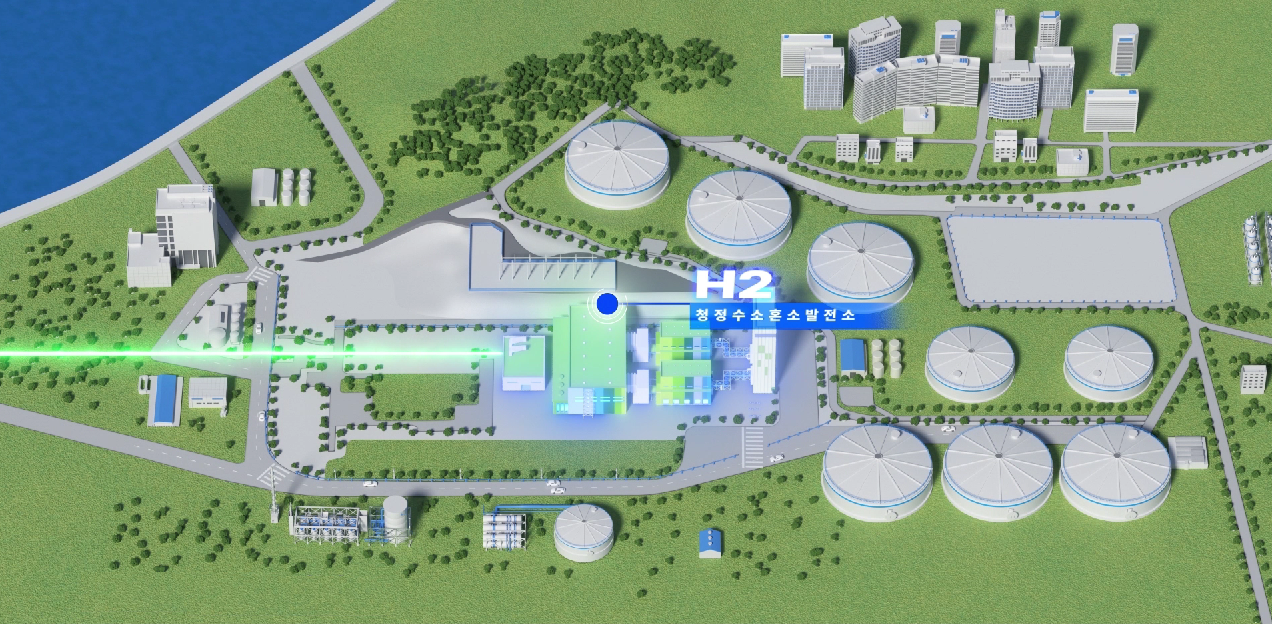
5. POSCO INTERNATIONAL Obtained Approval
for Amendment to Its Power Business Permit, Joining CHPS in 2025!
On November 22, 2024, POSCO INTERNATIONAL received approval for an amendment to its power business permit, allowing for the replacement and modernization of Units No. 3 and 4 at Incheon LNG Combined Cycle Power Plant. These new replacements are designed to participate in the clean hydrogen power bidding market, enabling the company to secure government subsidies for hydrogen power generation while aiming to begin clean hydrogen co-firing operations by 2028/2029.
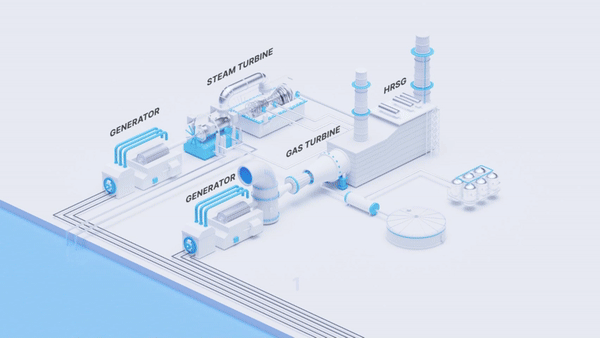
Being the lightest element in the universe, hydrogen presents significant challenges for handling as its extremely low boiling point of -253°C imposes technical constraints on storage and transportation. Establishing an efficient and economical infrastructure is essential to ensure a stable supply of large quantities of hydrogen.
The procurement of clean hydrogen also involves hurdles. Hydrogen production often requires substantial energy input, requiring technologies that minimize carbon emissions while maintaining economic viability. Additionally, the primary methods for hydrogen storage and transportation as well as the technology for processing liquefied hydrogen and ammonia still require advancements to balance cost reduction with operational safety.
To address these challenges, POSCO INTERNATIONAL is exploring various hydrogen supply solutions, including hydrogen extraction from ammonia, reforming of natural gas with carbon capture and storage (CCS), pink hydrogen production using nuclear energy, and liquefied hydrogen transport technologies, all aimed at establishing a stable and efficient supply chain for clean hydrogen.
Although large-scale production and supply of clean hydrogen still face many obstacles, hydrogen is poised to become a cornerstone of the future energy transition with proper technological innovation, sustained investment, and policy support.
POSCO INTERNATIONAL drives the future of clean hydrogen power!
Keep an eye on our great hydrogen business led by our Green Energy Business Group!
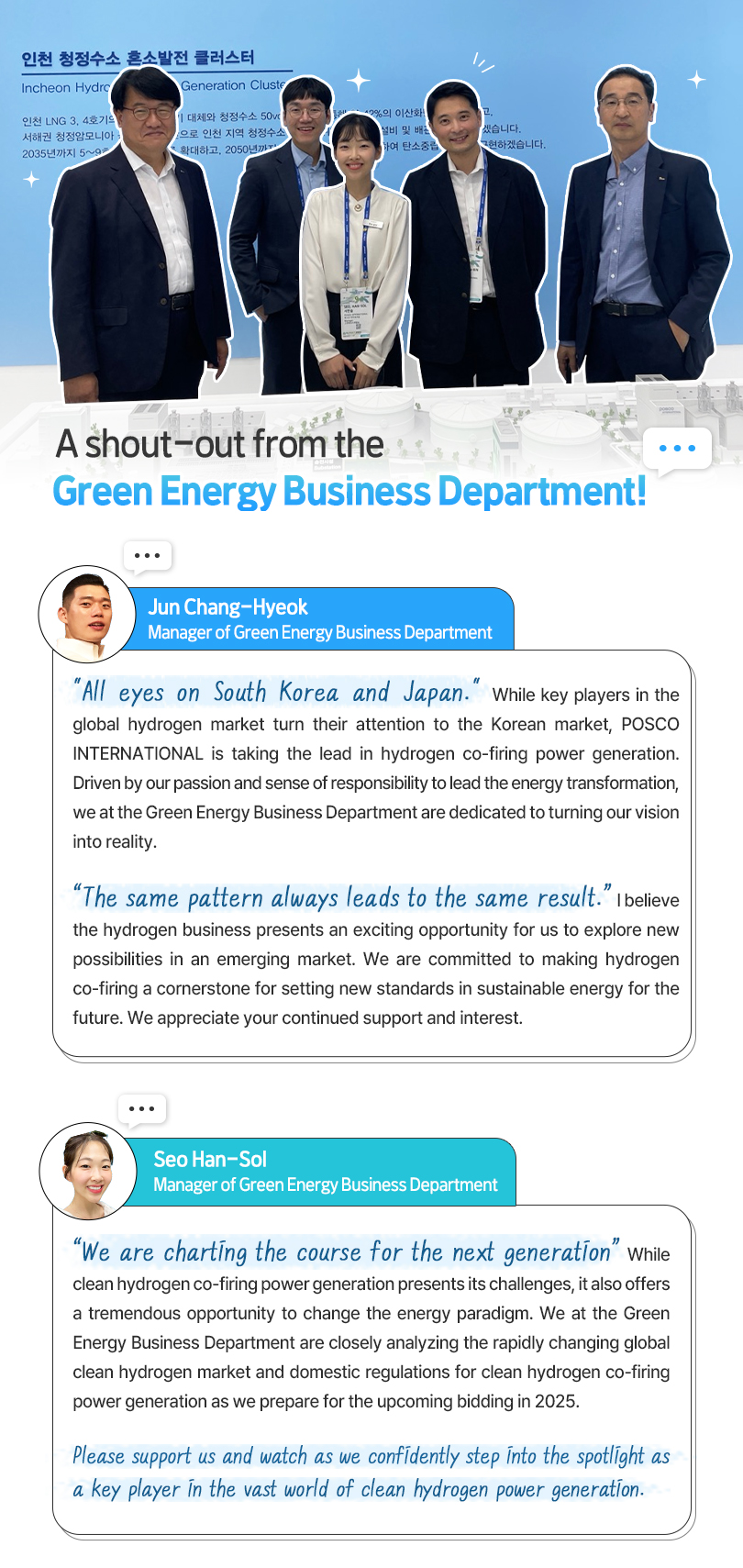
- According to the Korea Energy Economics Institute, the certification agency for clean hydrogen in Korea, clean hydrogen refers to hydrogen with less than 4 kg of CO2 emissions per 1 kg of hydrogen. ↩︎
- Renewable Portfolio Standard: A system that requires a specific percentage of renewable energy to be included in the overall energy production mix ↩︎







